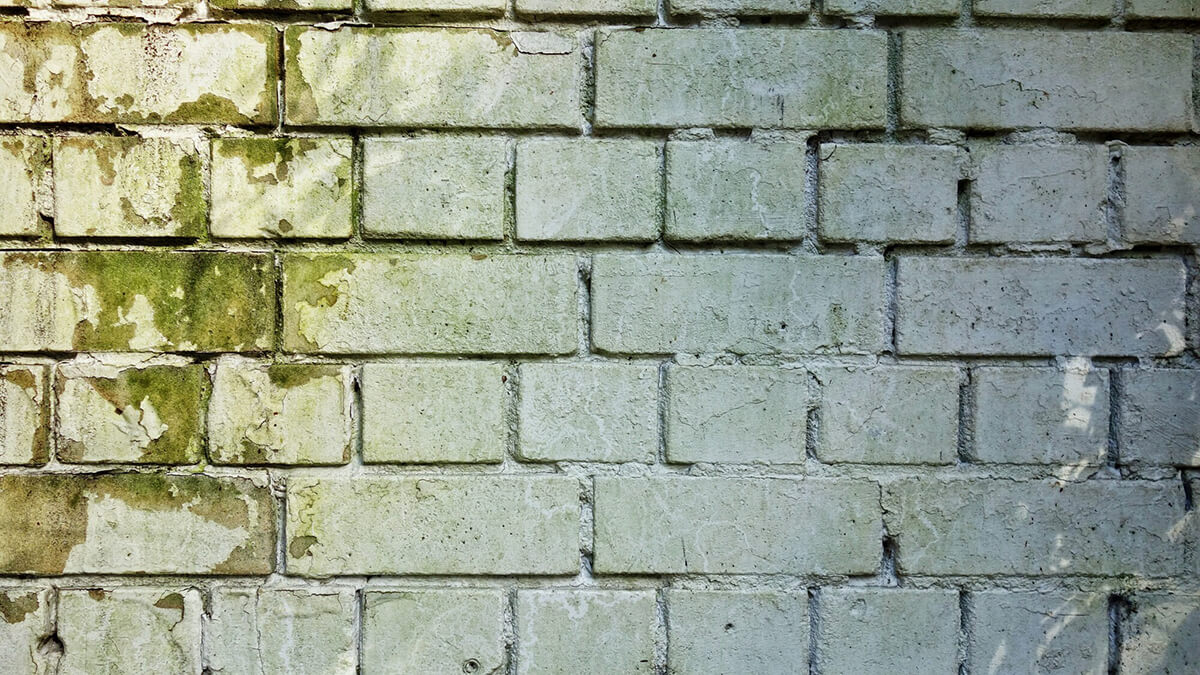Selling a house with mold can be challenging due to health concerns and the potential impact on property value. Mold not only poses health risks but also raises legal and financial considerations that need to be addressed. Addressing mold issues properly is crucial for a successful sale. iBuyer.com offers a streamlined and efficient solution for selling homes, even those with mold problems, making the process hassle-free.
Compare Cash Offers from Top Home Buyers. Delivered by Your Local iBuyer Certified Specialist.
One Expert, Multiple Offers, No Obligation.
Sell a House With Mold
Understanding Mold Issues
What is Mold?
Mold is a type of fungus that thrives in moist, warm environments. It can appear as black, white, orange, green, or purple spots and typically grows on surfaces like walls, ceilings, and floors. Common household molds include Aspergillus, Cladosporium, and Stachybotrys (also known as black mold). Mold spores can be harmful when inhaled, leading to health issues such as allergic reactions, respiratory problems, and even chronic illnesses.
Causes of Mold
Mold growth is usually caused by:
- Leaks: Leaking roofs, pipes, or windows can introduce moisture into a home.
- High Humidity: Humidity levels above 60% provide a conducive environment for mold.
- Poor Ventilation: Lack of airflow can trap moisture, leading to mold growth.
- Flooding: Water damage from floods can saturate materials, fostering mold development.
Assessing the Extent of Mold Damage
Professional Inspection
A professional mold inspection is crucial for accurately assessing the extent of mold damage in your home. Inspectors use specialized tools and techniques to identify mold presence and its severity, even in hidden areas. Typically, mold inspections involve:
- Visual Examination: Inspectors check for visible signs of mold, such as discoloration or water stains on walls, ceilings, and floors.
- Moisture Mapping: Using moisture meters to detect moisture levels in building materials, inspectors identify areas with potential mold growth.
- Air and Surface Sampling: Collecting samples of air and surfaces to test for mold spores, which are analyzed in a laboratory to determine mold type and concentration.
The cost of a professional mold inspection can vary, but it generally ranges from $300 to $1,000, depending on the size of the property and the complexity of the inspection.
Mold Testing and Reports
Mold testing involves analyzing air and surface samples to determine the type and concentration of mold spores present. This process helps in understanding the severity of the mold problem and planning appropriate remediation measures. Mold testing typically includes:
- Air Sampling: Collecting air samples to measure the concentration of mold spores in the indoor environment.
- Surface Sampling: Swabbing or tape-lifting samples from surfaces to identify mold growth directly.
- Laboratory Analysis: Sending samples to a lab for detailed analysis to identify mold species and spore counts.
Addressing Mold Issues
Mold Remediation
Mold remediation involves thorough cleaning and removal of mold from affected areas to ensure a safe and healthy environment. The process typically includes:
- Containment: Isolating the mold-affected area to prevent the spread of spores to other parts of the house.
- Air Filtration: Using HEPA filters to clean the air of mold spores.
- Removal of Mold-Infested Materials: Safely disposing of mold-infested materials such as drywall, insulation, and carpeting.
- Cleaning and Disinfection: Thoroughly cleaning and disinfecting surfaces with specialized cleaning agents to eliminate mold spores.
- Moisture Control: Identifying and fixing the source of moisture to prevent future mold growth.
The cost of mold remediation can vary widely depending on the extent of the infestation and the size of the area affected. On average, homeowners can expect to pay between $500 and $6,000 for mold remediation.
DIY Mold Removal
For minor mold problems, homeowners may choose to tackle the issue themselves. DIY mold removal involves:
- Safety Precautions: Wearing protective gear, including gloves, goggles, and a mask, to avoid exposure to mold spores.
- Cleaning Small Areas: Using household cleaning solutions like bleach, vinegar, or commercial mold removers to clean small mold patches.
- Drying the Area: Ensuring the cleaned area is thoroughly dried to prevent mold from returning.
Legal Requirements for Disclosure
Disclosure Obligations
When selling a house with mold, it is crucial to understand and comply with legal disclosure requirements. These obligations vary by state but generally mandate that sellers inform potential buyers about known defects and hazards, including mold.
Federal Regulations
The Environmental Protection Agency (EPA) recommends, but does not require, the disclosure of mold issues. However, the Residential Lead-Based Paint Hazard Reduction Act of 1992 requires sellers to disclose any known lead-based paint hazards.
Although not directly related to mold, this regulation underscores the importance of transparency regarding health hazards.
State and Local Regulations
- State laws often have specific requirements for disclosing mold. For instance, in California, sellers must disclose the presence of toxic mold if it exceeds a threshold that poses a risk to health. Other states may require disclosure if mold is found during a home inspection or if there is visible mold or mold-related damage.
- Local regulations can also come into play. Some municipalities have stricter rules regarding mold disclosure and remediation, particularly in areas prone to high humidity or flooding.
Consequences of Non-Disclosure
- Failing to disclose known mold issues can result in legal repercussions, including lawsuits from buyers for misrepresentation or fraud. Buyers who discover undisclosed mold after purchasing the home can seek compensation for remediation costs and potential health impacts.
- Sellers may also face fines and penalties from state or local authorities for not adhering to disclosure laws.
Transparency is key when selling a house with mold. Not only does it comply with legal requirements, but it also builds trust with potential buyers and can lead to a smoother transaction process.
Pricing Your Home
Impact of Mold on Home Value
Mold can significantly affect the market value of a home. Buyers often perceive homes with mold issues as high-risk investments due to potential health hazards and costly remediation. This perception can lead to:
- Lower Offers: Potential buyers may submit offers below the asking price to account for expected remediation costs.
- Reduced Buyer Interest: Homes with mold problems may attract fewer buyers, lengthening the time the property remains on the market.
- Inspection Failures: Homes with mold can fail inspections, complicating the sale process and potentially causing deals to fall through.
Strategies for Pricing a Home with Mold Issues
Setting a competitive price for a home with mold issues requires careful consideration to balance attracting buyers and recovering as much value as possible:
- Conduct a Comparative Market Analysis (CMA)
- Research the prices of similar homes in your area, focusing on those with mold or similar issues. This analysis will help you set a realistic price based on local market conditions.
- Estimate Remediation Costs
- Obtain quotes from professional mold remediation companies to understand the potential costs. Use this information to adjust your asking price, offering transparency to buyers about expected expenses.
- Offer Repair Credits or Concessions
- Instead of reducing the price, consider offering repair credits or concessions to buyers. This approach can make the deal more appealing by giving buyers the flexibility to handle remediation according to their preferences.
- Highlight Positives
- Focus on the home’s strengths, such as a desirable location, recent upgrades, or unique features. Emphasize these positives in your listing to counterbalance the mold issue.
Marketing Your Home with Mold
Transparent Listings
When selling a home with mold, transparency is crucial. Honest listings can build trust with potential buyers and reduce the risk of legal complications later. Here are some key strategies:
- Detail the Mold Issue: Clearly state the presence of mold in your property listing. Include specifics about the affected areas and the extent of the problem.
- Provide Inspection Reports: If you have had a professional mold inspection, include the report or a summary of its findings in your listing. This transparency can help manage buyer expectations.
- Highlight Remediation Efforts: If you have taken steps to address the mold, such as initial remediation or repairs, mention these efforts. Buyers will appreciate knowing that the issue has been partially or fully addressed.
- Showcase the Positives: Balance the listing by emphasizing the positive aspects of your home, such as its location, recent upgrades, or unique features. High-quality photos and descriptions can help attract buyers despite the mold issue.
Targeting the Right Buyers
Marketing a home with mold requires a strategic approach to attract the right kind of buyers:
- Investors and Flippers: These buyers are often more willing to purchase homes with mold since they plan to renovate and resell them. Highlighting the investment potential can be a strong selling point.
- Cash Buyers: Cash buyers can expedite the sale process, which is particularly beneficial when dealing with mold issues. Platforms like iBuyer.com can connect you with cash buyers who are prepared to handle remediation.
- Online Platforms and Real Estate Websites: Utilize popular real estate websites and social media to reach a broad audience. Platforms like Zillow, Redfin, and Realtor.com allow you to specify details about the property’s condition, attracting buyers who are specifically looking for fixer-uppers or investment opportunities.
Selling Options for Homes with Mold
Selling As-Is
Selling a home as-is can be a straightforward solution for homeowners dealing with mold. This approach involves selling the property in its current condition without making any repairs or improvements.
Pros:
- Quick Sale: Selling as-is can expedite the sale process, especially if the buyer is willing to accept the property’s condition.
- No Repair Costs: Homeowners save on the costs and hassle of mold remediation and repairs.
Cons:
- Lower Sale Price: The final sale price might be lower since buyers will factor in the cost of mold remediation and repairs.
- Limited Buyer Pool: Fewer buyers may be interested in a home with known issues.
Attracting the Right Buyers:
- Investors and Flippers: These buyers are often looking for properties that they can purchase at a lower price, fix up, and resell for a profit.
- Cash Buyers: Cash buyers can complete transactions quickly and are often more willing to purchase homes as-is.
iBuyer.com Solution
iBuyer.com offers a convenient and efficient way to sell a home with mold issues. Here’s how it works:
- Instant Cash Offers: iBuyer.com provides homeowners with a fair cash offer based on the current market value and condition of the property. This eliminates the need for lengthy negotiations.
- Fast and Flexible Closing Dates: Homeowners can choose a closing date that suits their schedule, ensuring a smooth transition.
- Handling All Paperwork and Legalities: iBuyer.com takes care of all the necessary paperwork and legal requirements, making the selling process hassle-free.
Traditional Real Estate Market
Selling a home with mold through the traditional real estate market can be challenging but not impossible. Here are some key points to consider:
Pros:
- Potentially Higher Offers: Listing on the traditional market might attract multiple offers, potentially driving up the sale price.
- Buyer Flexibility: Some buyers may be open to purchasing homes with issues if the location and other features are desirable.
Cons:
- Extended Time on Market: Homes with mold issues may take longer to sell due to buyer hesitation.
- Negotiation Challenges: Buyers will likely negotiate hard, asking for significant discounts or credits for mold remediation.
Finding the Right Agent:
- Experience with Mold-Affected Properties: Look for a real estate agent who has experience selling homes with mold issues. They will understand how to market the property effectively and handle buyer concerns.
- Marketing Strategy: An experienced agent will develop a tailored marketing strategy, emphasizing the home’s strengths while transparently addressing the mold issue.
Conclusion
Selling a house with mold presents unique challenges, but with the right approach, it is entirely feasible. Addressing mold issues, whether through remediation or clear disclosure, is crucial to a successful sale. Homeowners must weigh the costs and benefits of repairing versus selling as-is and consider their options carefully.
Key Takeaways:
- Assess and Address Mold Issues: Understand the extent of mold damage through professional inspections and decide whether to repair or sell as-is.
- Legal and Disclosure Requirements: Be transparent with potential buyers about mold issues to avoid legal complications.
- Pricing and Marketing Strategies: Adjust the price to reflect the condition of the home and market effectively to attract the right buyers.
- Selling Options: Consider various selling options, including selling as-is, leveraging iBuyer services for a quick sale, or navigating the traditional real estate market.
Using services like iBuyer.com can significantly simplify the process, providing homeowners with a hassle-free way to sell their property quickly and efficiently, regardless of its condition. By opting for a fast cash offer, sellers can avoid the stress and costs associated with extensive mold remediation.
Instant Valuation, Confidential Deals with a Certified iBuyer.com Specialist.
Sell Smart, Sell Fast, Get Sold. No Obligations.
FAQs
Yes, you can sell your house with mold, but it’s important to disclose the issue to potential buyers. Not disclosing mold can lead to legal complications. Many buyers, including investors and cash buyers, may be willing to purchase a house with mold, especially if they are looking for fixer-uppers.
Mold remediation costs can vary widely depending on the extent of the infestation. On average, homeowners can expect to pay between $1,500 and $3,000 for a small to medium-sized remediation project. For extensive mold issues, costs can rise to $6,000 or more. It’s advisable to get multiple quotes from certified professionals to understand the specific costs for your situation.
Mold can significantly impact your home’s value. Buyers may be wary of purchasing a property with mold due to potential health risks and remediation costs. This can result in lower offers or longer time on the market. Addressing mold issues before listing your home, or being transparent about them and pricing your home accordingly, can help mitigate the impact on your home’s value.
Reilly Dzurick is a seasoned real estate agent at Get Land Florida, bringing over six years of industry experience to the vibrant Vero Beach market. She is known for her deep understanding of local real estate trends and her dedication to helping clients find their dream properties. Reilly’s journey in real estate is complemented by her academic background in Public Relations, Advertising, and Applied Communication from the University of North Florida.




